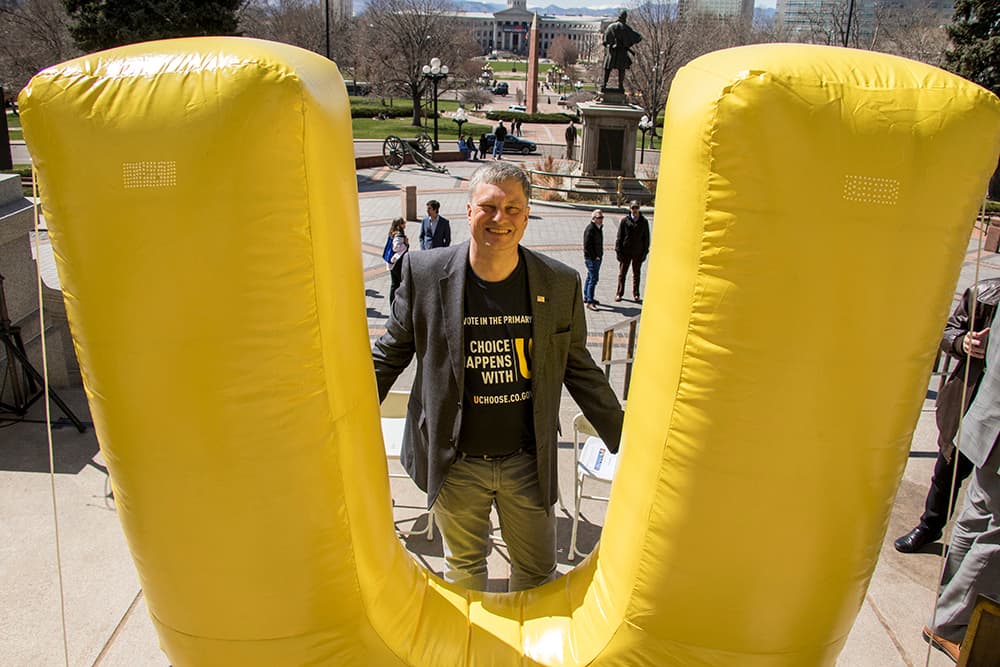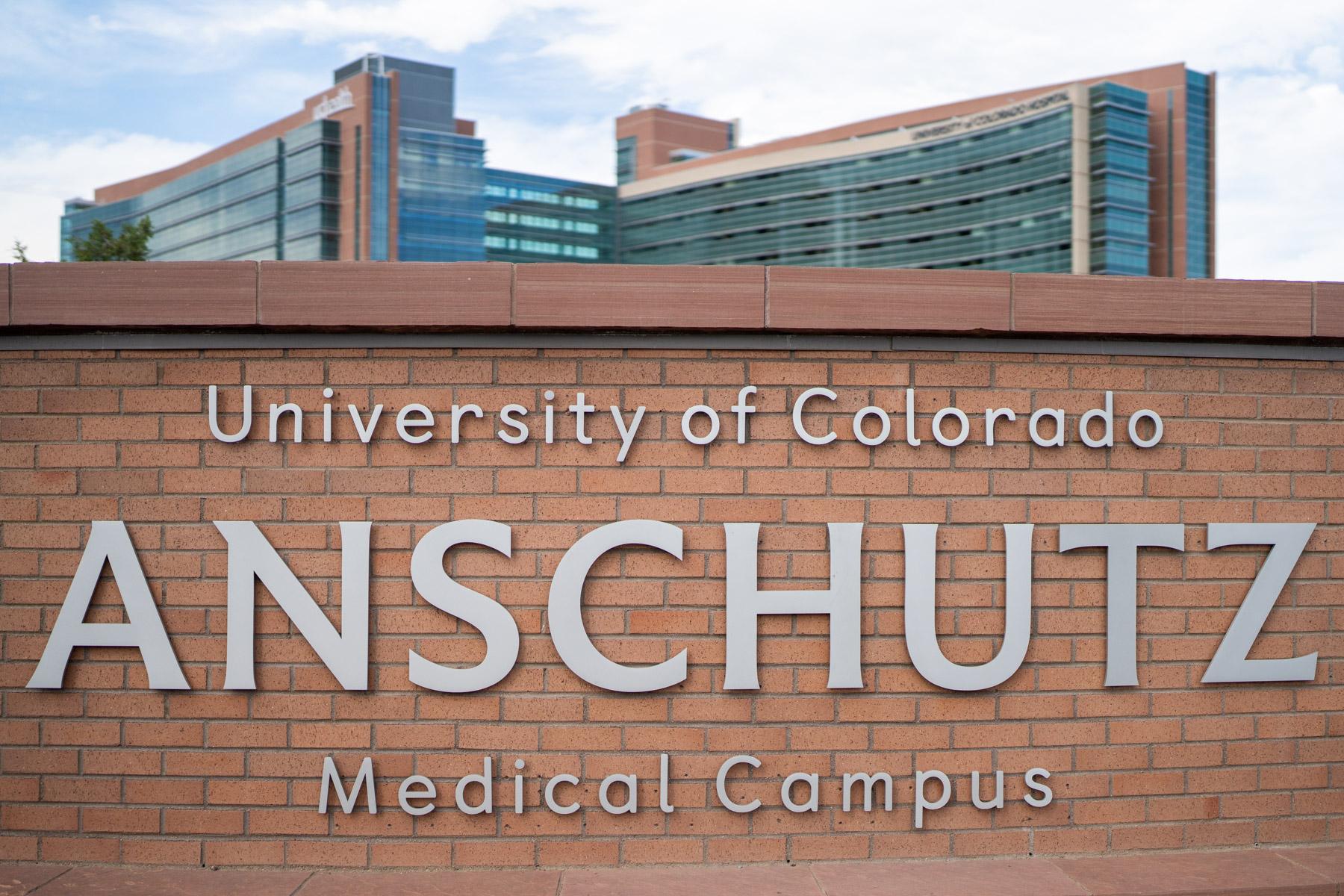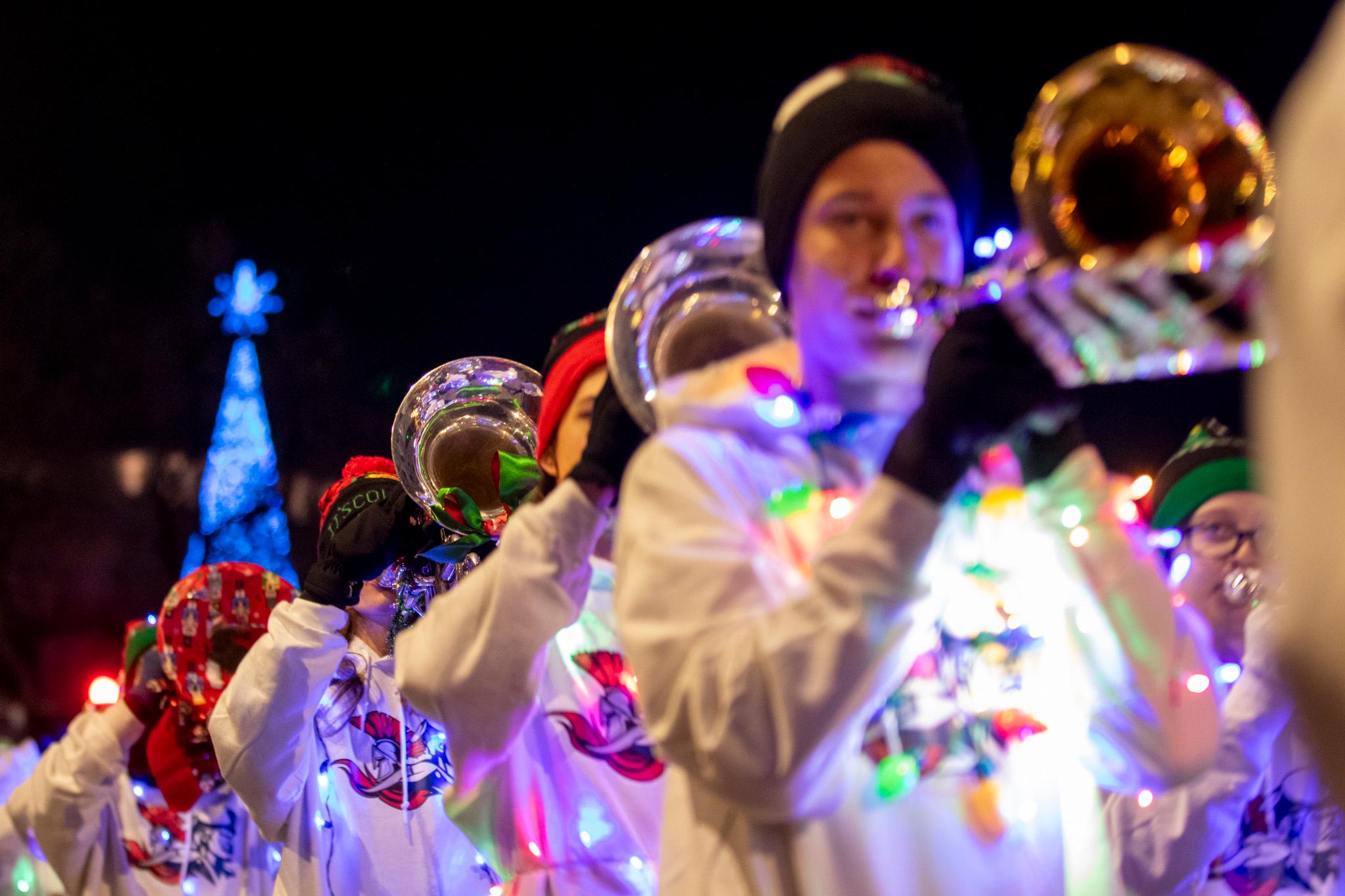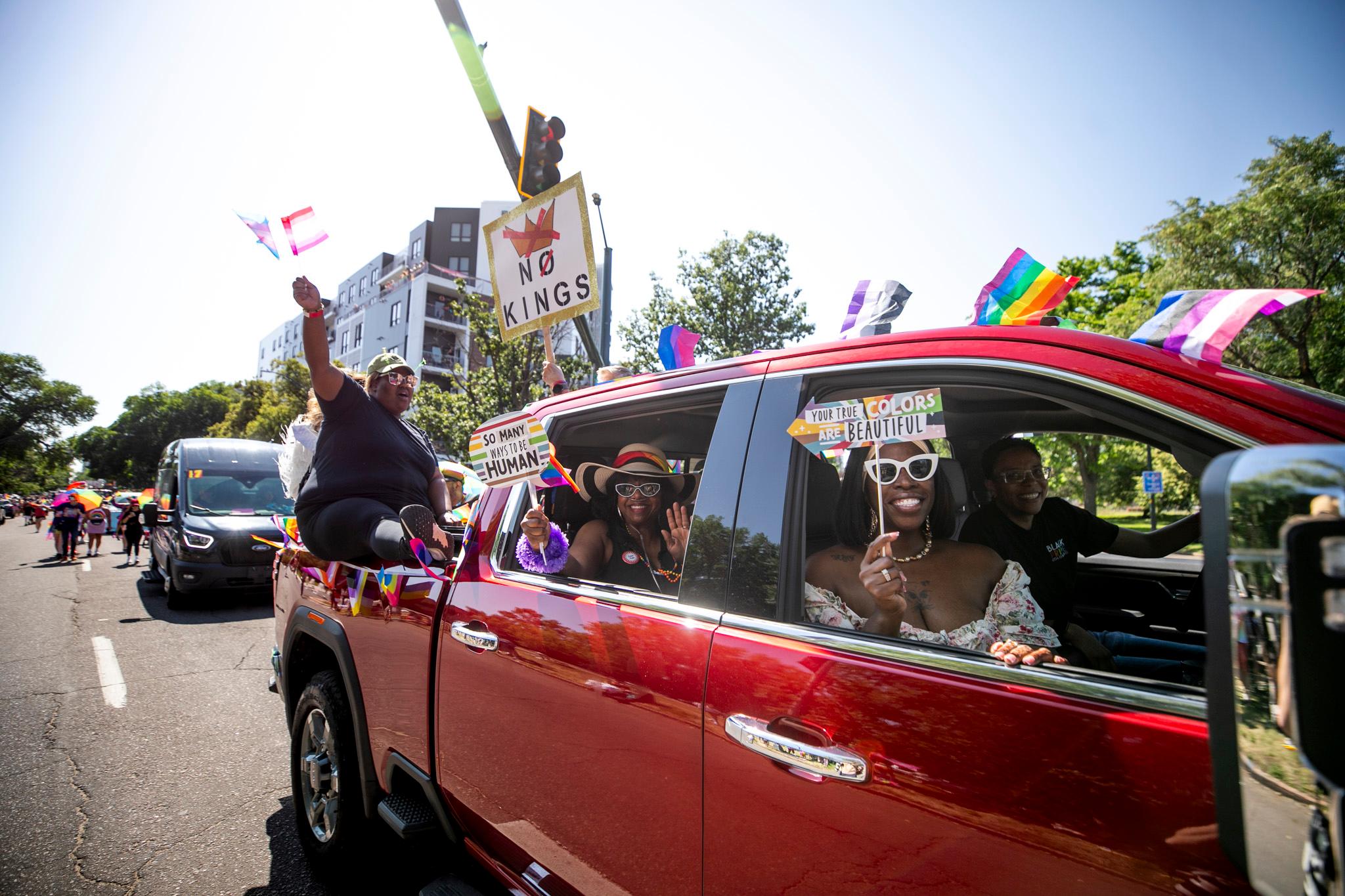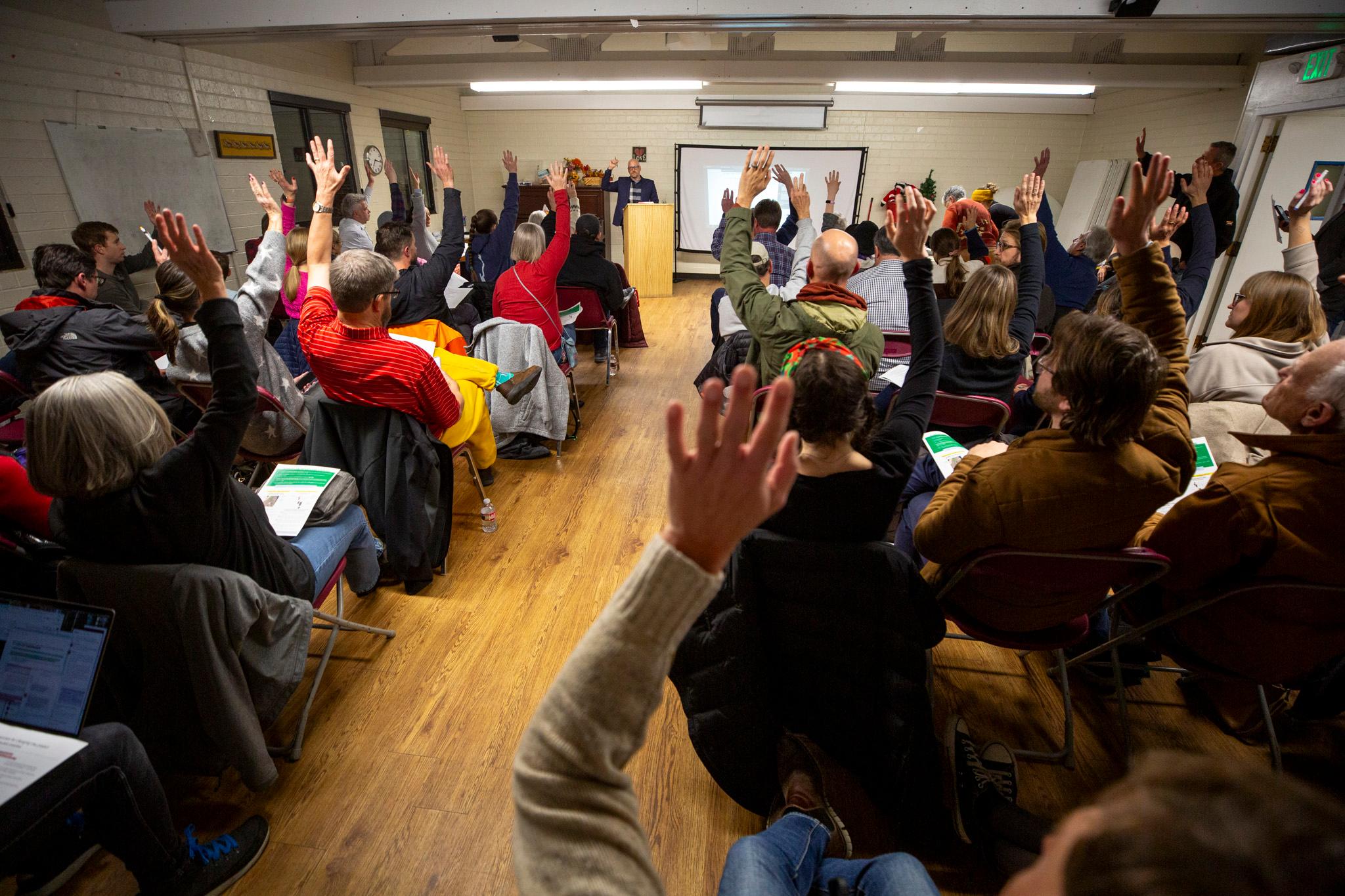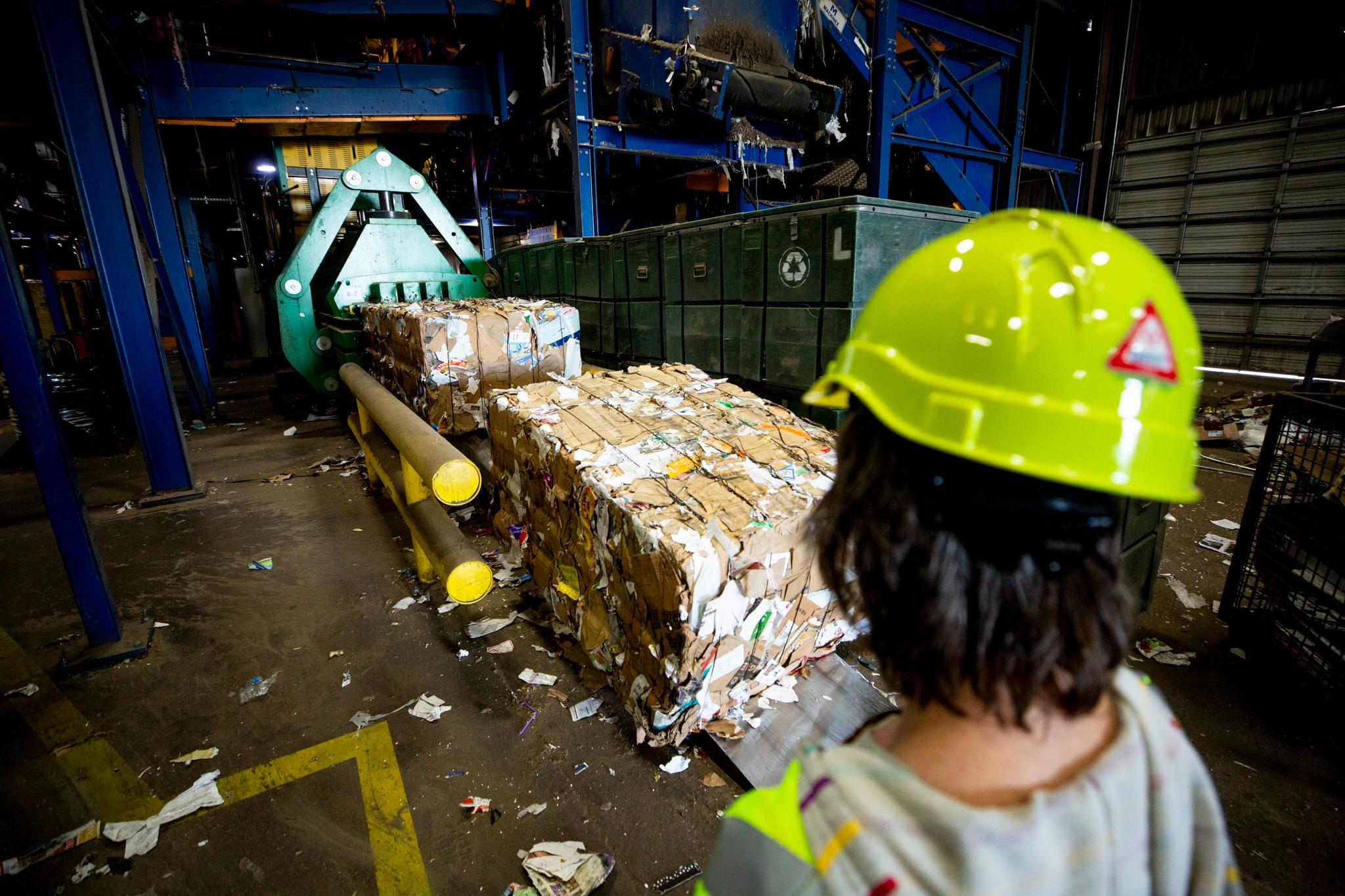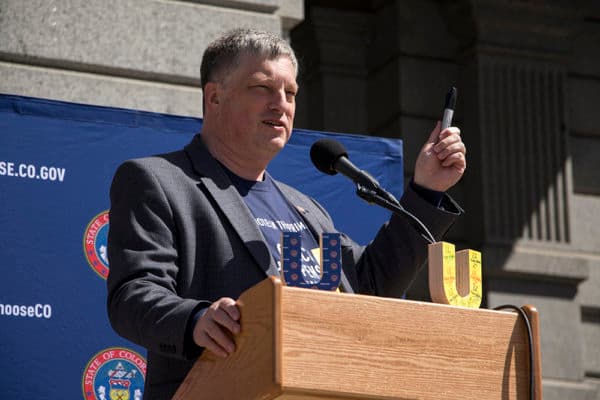
Secretary of State Wayne Williams is making stops around Colorado with an 8-foot "U," because sometimes democracy requires giant inflatable vowels.
His tour stopped at the Capitol on Tuesday with the big yellow U, which he said stands for “you” and for unaffiliated Colorado voters. It’s part of a campaign called UChooseCO that calls attention to unaffiliated voters' new ability to vote in Democrat and Republican primaries on June 26. The campaign launched last week in Grand Junction and was in Colorado Springs earlier on Tuesday.
Williams said his office polled residents and found that less than half of people knew they were able to do this this year.
“We want to do a couple things in this campaign,” Williams said. “We want to make sure first that voters are aware of this opportunity.”
The ability for unaffiliated voters to vote in primaries, which traditionally have only allowed party members to participate, was approved by voters in 2016. It allows unaffiliated voters (who make up more than a third of all active voters) to cast ballots in either the Democratic or Republican party primates.

By allowing unaffiliated voters, the pool for potential primary voters has grown by more than 1 million. And as DaVita CEO Kent Thiry pointed out, the new initiative allows unaffiliated taxpayers to participate in elections they paid for.
Thiry said it could also encourage more moderate candidates to run and make more races competitive.
“It’s also great for the legislators, it’s also great for the parties in our minds,” Thiry said. “Most importantly, it’s great for Colorado, because now the government of Colorado will be more representative of the people of Colorado -- all of the people.”
Here’s how you can participate in primaries as an unaffiliated voter.
It's pretty simple: You can log in online and pick a preferred primary ballot, which will be mailed to you. If you’re a registered unaffiliated voter and don’t indicate a preference, you will receive both ballots. But you can only vote in one. You cannot vote in both.
Seriously. Do not vote in both. It would invalidate your ballot.
“We want people to know they need to pick one or another,” Williams said. “They can do that in advance ... or they can do it when they get the two balllots. But they need to make sure that they don’t return both of the ballots and simply return one of the ones and vote that one ballot in order to have that counted.”
Williams said that voting in the Democratic or Republican party doesn't lock your vote for the fall election. This means you can vote in one primary in June for one party and vote for a different candidate in a different party during the General Election in November.
Joanne M. Rock, of Eagle, is an unaffiliated candidate who called herself "really independent." She said she's been studying up in preparation. She said the new opportunity for unaffiliated voters could provided added motivation for voters.
"It's inspiring interest early in the campaign," Rock said.
More than 3.5 million Coloradans are currently registered to vote.
The latest available figures from the SOS website show as of Sunday, there are 3,255,045 active voters in Colorado. That’s an increase of 17,345 voters from March 1 (3,237,700 active voters). It’s about the same amount of increase in February’s figures, which increased by 17,747 voters, from 3,219,953 on Feb. 1 to 3,237,700.
Here’s the major party affiliation breakdown among active voters for the most recent numbers:
-Unaffiliated: 1,184,408
-Democratic: 1,012,125
-Republican: 1,000,229
Overall, there are 3.78 million Coloradans registered to vote. This figure includes active voters we just mentioned and inactive voters (528,750). In addition, 35,628 residents between 16 and 17 have pre-registered to vote, which Secretary of State spokesperson Lynn Bartels said is allowed in Colorado. If these young voters turn 18 by an election, they get a ballot mailed to them.
Bartels said in an email that active voters are those whose mailing address is currently on file with the SOS. This means they will get a ballot mailed to them.
Inactive voters won’t get a ballot mailed to them. This is because a clerk sent them a piece of mail that bounced back, Bartels said. She said these voters can still vote at the clerk’s office or voting polling centers.

